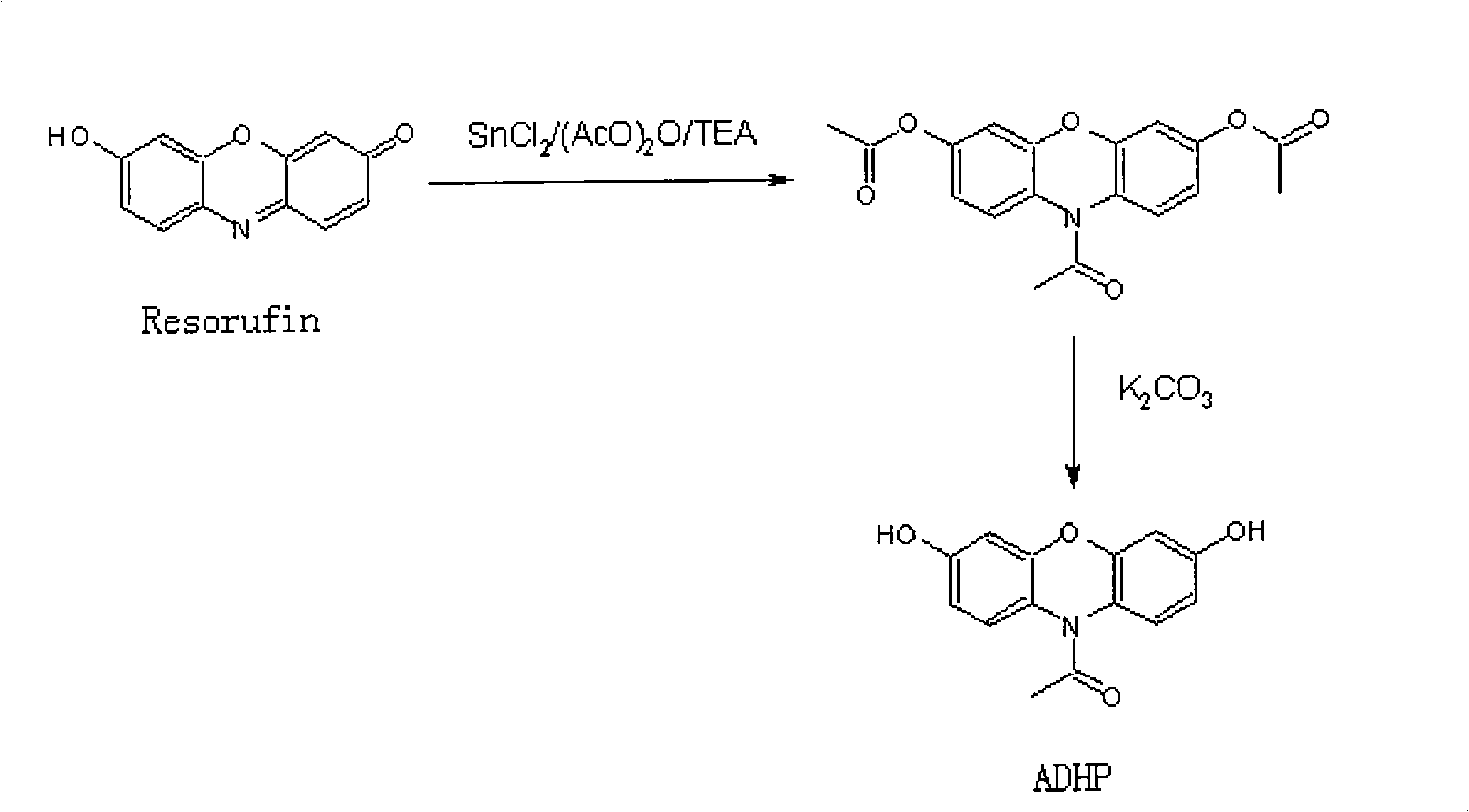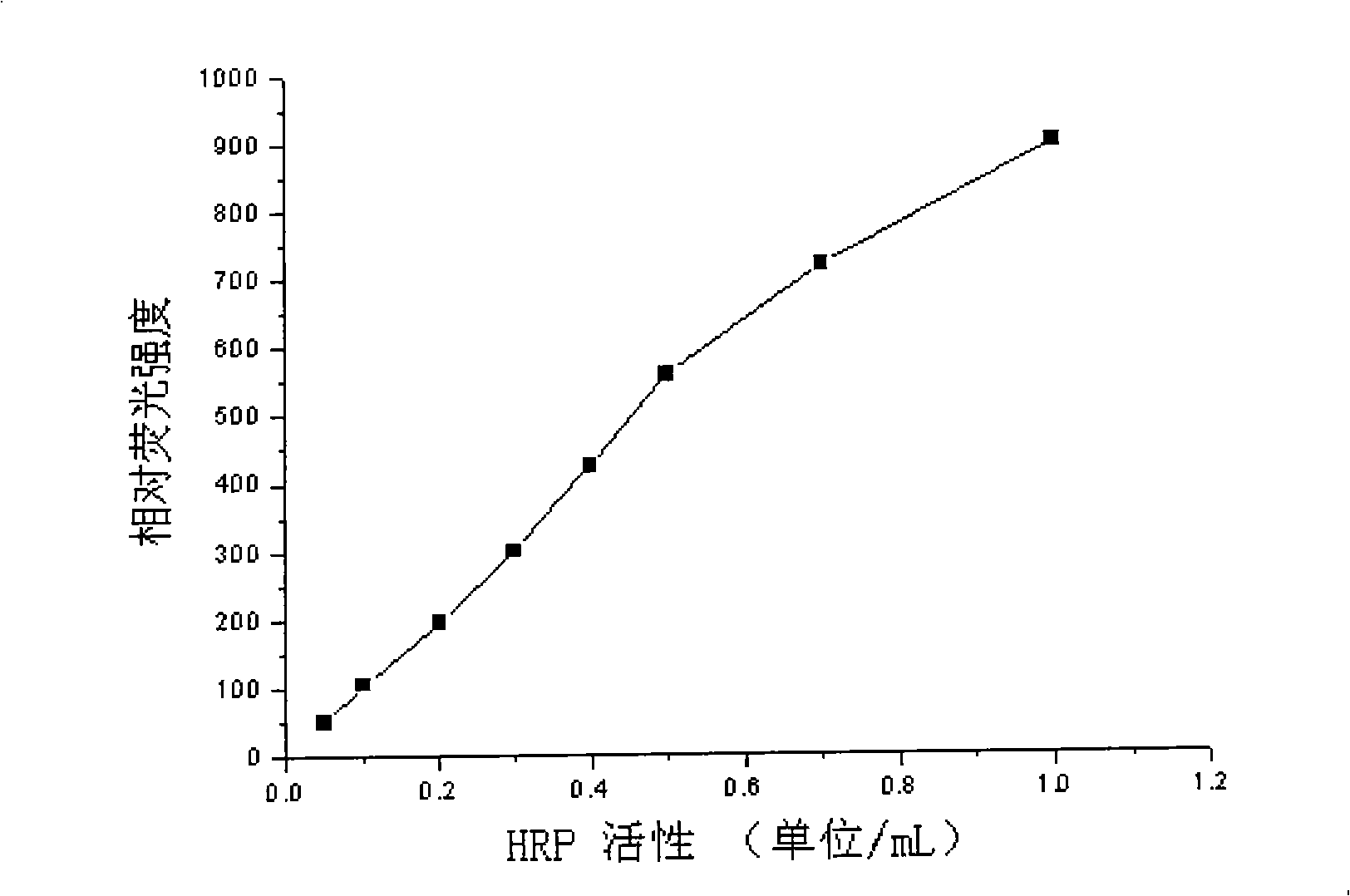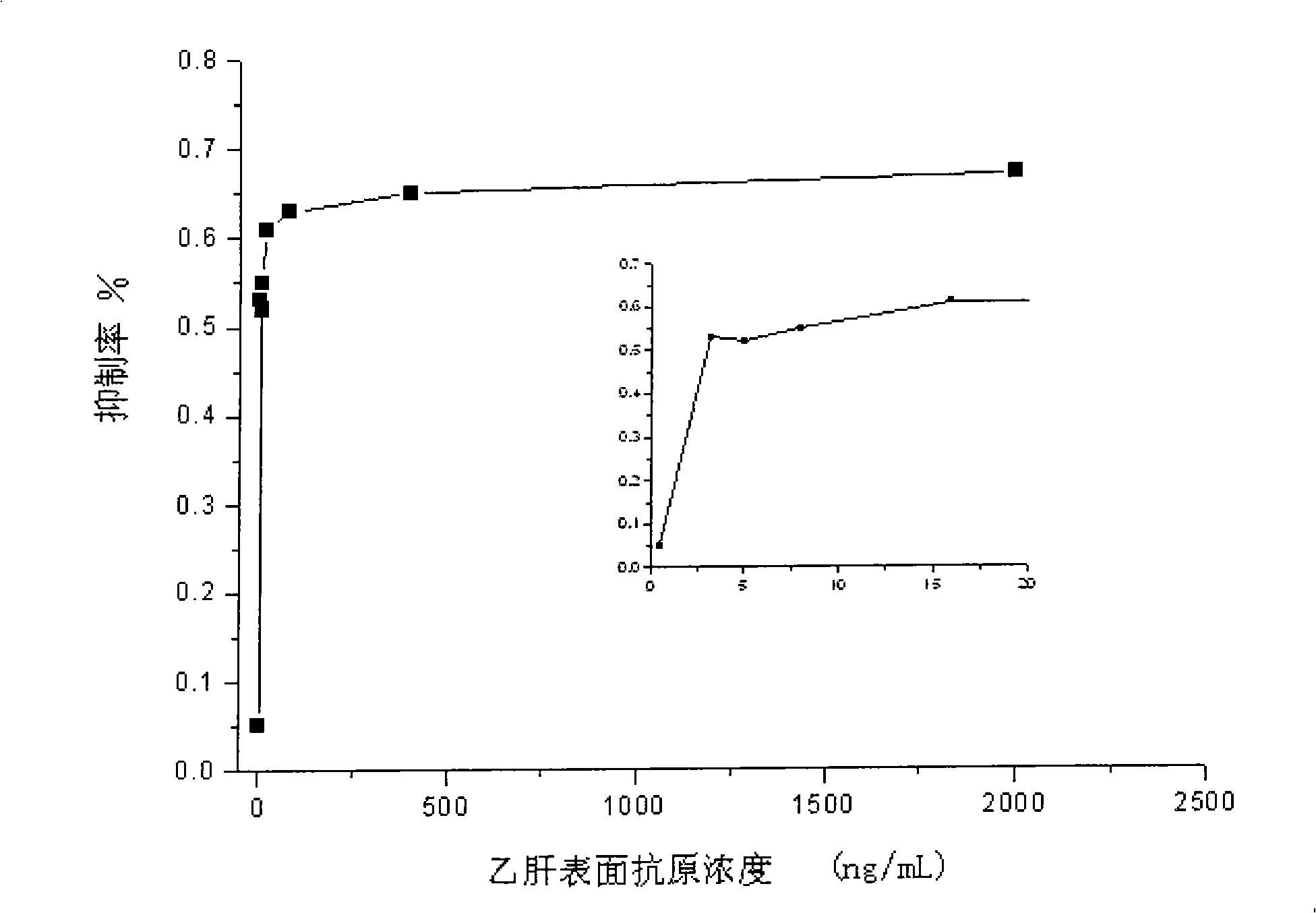Hepatitis b surface antigen and antibody detection method
A hepatitis B and surface antigen technology, applied in the field of new fluorescent detection reagents, can solve the problems of inability to suppress the virus and low activity
- Summary
- Abstract
- Description
- Claims
- Application Information
AI Technical Summary
Problems solved by technology
Method used
Image
Examples
Embodiment 1
[0077] Synthesis of embodiment 1 fluorescent HRP substrate
[0078] According to the attached figure 1 The reaction scheme shown synthesizes ADHP.
[0079] 25g of Resorufin (Resorufin) was suspended in 100mL of acetic anhydride at room temperature. During stirring, 3 mL of triethylamine and 60 g of stannous chloride were slowly added to this suspension. The reaction mixture was heated and stirred at 100-130°C until the mixture changed from a red suspension to a yellow-orange solution. The reaction mixture was cooled to 30-40°C and poured into ice water. Filter with suction and wash with a large amount of water to obtain a precipitate. The crude product was further purified by recrystallization to obtain 20 g of pure compound O, O, N-triacetyldihydroresorufin.
[0080] Suspend 10 g of O, O, N-triacetyldihydroresorufin in methanol at room temperature. With stirring, slowly add 10% K to this suspension 2 CO 3 , the mixture was stirred rapidly at room temperature until t...
Embodiment 2
[0081] Example 2. Synthesis of HRP-labeled polypeptides
[0082] In this example, a covalent linker between a synthetic polypeptide mainly containing HBsAg (hepatitis B surface antigen) determinant and horseradish peroxidase (HRP) was prepared. The selection of the polypeptide amino acid sequence with the HBsAg determinant has been reported by A.R.Neurath, N.Strick and N.R.Oleszko in the following document: "Localization of a Hepatitis B Surface Antigen Determinant Deduced FromResults of Chemical Modifications", J. Virol. Methods, 3, 115-125, 1981. Wherein the amino acid sequence is as follows:
[0083] P135-155A:
[0084] Pro-Ser-Cys-Cys-Cys-Thr-Lys-Pro-Thr-Asp-Gly-Asn-Cys-Thr-Cys-Ile-Pro-Ile-Pro-Ser-Ser;
[0085] P135-155B:
[0086] Pro-Ser-Cys-Cys-Cys-Thr-Lys-Pro-Ser-Asp-Gly-Asn-Cys-Thr-Cys-Ile-Pro-Ile-Pro-Ser-Ser;
[0087] P135-143: Pro-Ser-Cys-Cys-Cys-Thr-Lys-Pro-Thr; or
[0088] P143-155: Ser-Asp-Gly-Asn-Cys-Thr-Cys-Ile-Pro-Ile-Pro-Ser-Ser.
[0089] The horserad...
Embodiment 3
[0092] Example 3. Fluorescence assay of HRP-polypeptide linker activity
[0093] Taking the HRP-polypeptide linker P135-155A-HRP as an example, the fluorescence values of different concentrations of the HRP-polypeptide linker were measured.
[0094] Take the DMSO stock solution of 5mM ADHP, with 50mM containing 1mM H 2 o 2 Dilute to 100 μM in sodium phosphate buffer (pH 7.4). These assay solutions were incubated at room temperature for 30 min in the presence of different concentrations of HRP-polypeptide conjugates. An automatic microplate reader was used to detect the fluorescence at an excitation wavelength of 530±25nm and an emission wavelength of 590±35nm. Fluorescence without the HRP control response was background fluorescence, and the background fluorescence value was subtracted from each value. figure 2 It was shown that ADHP can detect very low concentrations of HRP-tagged polypeptides.
PUM
 Login to View More
Login to View More Abstract
Description
Claims
Application Information
 Login to View More
Login to View More - Generate Ideas
- Intellectual Property
- Life Sciences
- Materials
- Tech Scout
- Unparalleled Data Quality
- Higher Quality Content
- 60% Fewer Hallucinations
Browse by: Latest US Patents, China's latest patents, Technical Efficacy Thesaurus, Application Domain, Technology Topic, Popular Technical Reports.
© 2025 PatSnap. All rights reserved.Legal|Privacy policy|Modern Slavery Act Transparency Statement|Sitemap|About US| Contact US: help@patsnap.com



